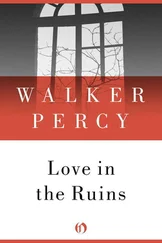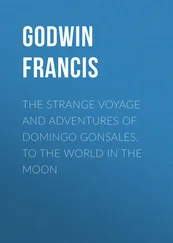Banks, like his contemporaries, took it for granted that plants were there for the taking. They did not concern themselves with questions of ownership; at the same time, they were also generally unaware of the consequences of transplantation and the introduction of foreign species into new habitats. They assumed it was beneficial.
Banks was immensely curious, and it is his desire for knowledge that drives the narrative of the book. People and plants were the motivating force for his actions and sent his mind and his collectors exploring the world and its oceans.
Joseph Banks and Kew
‘If I am to do all to write all to direct all & to pay for all & no human being feel inclined to thank me I shall I fear in due time feel as sulky as an old sow who has lost her scrubbing Post . ’ [1]
Who was Joseph Banks?[2] He was born on 13 February 1743 in London to William and Sarah Banks, the couple’s first and only son.[3] William entered Middle Temple, London, but is not known to have pursued any legal career. Though he and his wife, who was from Derbyshire, spent some of their time in the St James’s area of London at their Argyll Street home, most of their life was lived at their country estate at Revesby Abbey, Lincolnshire. Here, William, now also a Member of Parliament for a Cornwall constituency, devoted himself to the Lincolnshire estates which he had inherited from his father in 1741.
Joseph’s formal education began at the age of nine at Harrow School but four years later he was transferred to Eton, where he followed a curriculum primarily in Latin, Greek and English literature, which he studied dutifully but without much enthusiasm or success. Towards the end of his stay, he was also instructed in algebra, geography and French.
Next was Christ Church, Oxford, which he entered as a gentleman-commoner on 16 December 1760, aged seventeen. During his first year at the university, Joseph’s father William died aged forty-one. When he came of age in 1764, Banks inherited his father’s Lincolnshire estates and thus became an extremely wealthy young man.
Banks continued to attend university and during his time there he became intensely interested in natural history. As a boy, he had collected plants and insects like many others of his age and class but now he wanted to study botany seriously. To get some kind of formal instruction in botany – the subject was not on the curriculum at Oxford – Banks, who now had money, and with the support of Humphrey Sibthorp, the Sherardian Professor of Botany (who did not teach the subject), paid to be present at a set of lectures delivered during the summer of 1764 to a group of sixty enthusiastic students by Israel Lyons, a Cambridge botanist and astronomer.[4]
Lyons was one of the earliest exponents of the new Linnaean system in Britain and shared his understanding of and passion for it with Banks. In 1735, Carl Linnaeus, who was born in southern Sweden in 1707, published a new, simple and radical classification system based on the sexual characteristics of plants (the number of stamens and pistils).[5] The nomenclature he devised consisted of a binomial description of genus followed by species. At Uppsala University, where he taught medicine and botany, Linnaeus educated a large number of devoted students, many of whom travelled abroad searching for plants and spreading knowledge of his botanical system.[6] Although Banks wanted to meet Linnaeus, he never did (Linnaeus died in 1778) but his close associates, Daniel Solander and Jonas Dryander, were both educated by Linnaeus, as was one of his collectors and many others in his circle.
Lyons and Banks became close friends and their association worked to both men’s benefit over the coming years until 1775, when Lyons died at the age of thirty-six.
Banks left Oxford without a degree shortly after Lyons’s lectures. He could have done anything he liked – gone into the law, Church, or the City – or simply enjoyed himself as a wealthy young man about town, but his great enthusiasm was for plants. As soon as he could he moved to Bloomsbury close by the newly opened British Museum, to which he obtained a reader’s ticket on 3 August 1764, and there threw himself into the study of botany, helped by its world-famous herbaria, illustrations and texts.
At that time, the British Museum was the only public space in London where natural history could be studied. While he was there, Banks became acquainted with others like himself, and through his new contacts and friendships, he was elected in his absence at age twenty-three a Fellow of the Royal Society on 1 May 1766.
Like every enthusiastic naturalist, Banks went out and about botanising, observing and collecting living specimens in their habitat. A rare chance to botanise beyond Europe came Banks’s way in April 1766, when an old school friend, now Lieutenant Constantine Phipps, invited him to join HMS Niger bound for Newfoundland and Labrador, on fisheries protection duty.[7] Banks eagerly accepted the opportunity.
The Niger , with Banks aboard, was away from England for nine months, from 22 April 1766. Six of those months were spent in and around Newfoundland and Labrador. Coming home by way of Lisbon on 26 January 1767, Banks landed with a substantial haul of new natural specimens – plants, birds, insects and fishes – all of which needed to be classified and some of which were illustrated as well, for which task he principally employed the great and highly established Linnaean artist, Georg Ehret, and the young Scottish artist, Sydney Parkinson, to whom Banks had just been introduced by James Lee, the part owner of the famous Vineyard Nursery in Hammersmith.[8]
Exciting as this adventure was, it paled into insignificance when compared to the next one. Not only was it a longer expedition and to a part of the world that only a few Europeans had ever been to, but it would be partly sponsored by the Royal Society, of which he would become one of its most famous Fellows. This epic voyage to the South Pacific would become a defining moment in Banks’s life and interests.
There are many beginnings to the voyage of HMS Endeavour but a significant one took place on 15 February 1768 when King George III received a ‘Memorial for Improving Natural Knowledge’ from the Royal Society.[9] The Society was appealing to the King for his financial support to send two men to the South Pacific somewhere in a rectangle bounded by a latitude ‘not exceeding 30 degrees [south] and between the 140th and 180th degrees of longitude west’, as defined by Nevil Maskelyne, the Astronomer Royal, to observe the transit of Venus, predicted to be visible there on 3 June 1769 – an event that would not occur again until 1874.[10] The Royal Society had been discussing since at least June 1766 how they would contribute to observing and recording this rare but crucially important astronomical occasion, from which it was hoped they could calculate the size of the solar system. On 19 November 1767, the Society’s newly constituted Committee for the Transit had agreed the general plan of sending observers on a ship to the Pacific that would need to be rounding Cape Horn no later than January 1769.[11] Time was running out for adequate preparations to be made. ‘The Royal Society’, the memorial pleaded, ‘was in no condition to defray this Expence [which they had estimated at £4000, not including the cost of the ship], their Annual Income being scarcely sufficient to carry on the necessary business of the Society.’ Time was of the essence. Several other European powers (the memorial pointed to France, Spain, Denmark and Russia) were already making their own preparations for the event and Britain, in the forefront of astronomical science, simply could not afford to be a bystander. The memorial was signed by James Douglas, Earl of Morton, the Society’s president, and fourteen Fellows including Benjamin Franklin and Nevil Maskelyne.[12]
Читать дальше












